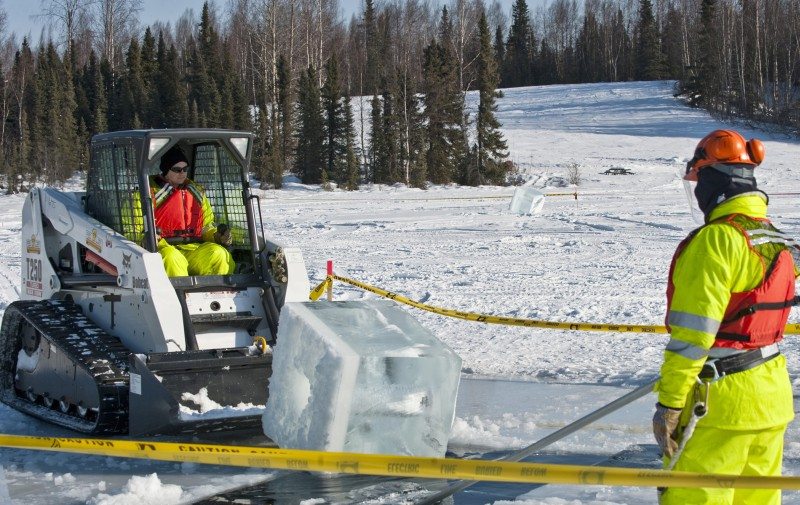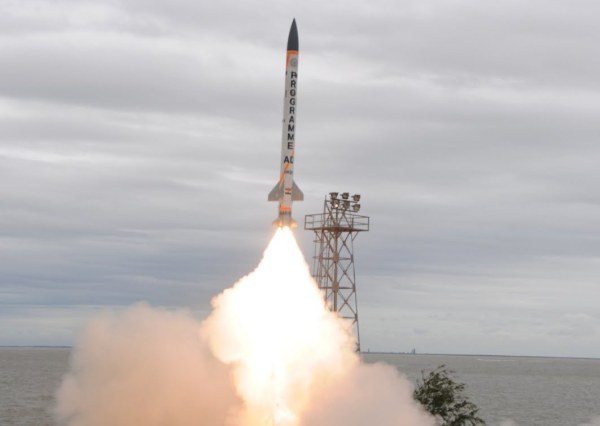Nobody can predict an oil spill, but when one happens it can be a challenging feat to clean up, especially with more than 30 inches of ice in the way.
That’s why 60 people from various agencies including the Air Force 611th Civil Engineer Squadron here, the U.S. Coast Guard, the Navy’s Supervisor of Salvage, the Alaska Department of Environmental Conservation and the Alaska Chadux Corporation teamed up in the annual Ice Operation Exercise March 1 and 4.
The training took place at a nearby lake and crews practiced techniques designed to clean up under-ice oil spills.
For approximately half the participants, this was their first time at “Ice Ops,” in temperatures as low as zero degrees.
The 611th CES is a mobile unit that must be ready at all times, taking primary responsibility for the town of King Salmon and for Eareckson Air Station on Shemya Island, Alaska.
“You never know when you’re going to have an oil spill and that’s not the time to be out there trying to figure out how something operates,” said Scott Anderson, 611th CES chief of environmental operations.
Mr. Anderson said he thought the training was going well after day one. He said the day usually starts slow, but once everybody gets introduced and the operation is up and running, the communication picks up and the job gets done.
Before the exercise began, a group measured ice thickness and the contour on the bottom of the ice using a ground-penetrating radar device, blocking off an area approximately 200 by 300 feet.
This report let incident commanders know which areas of the lake were best to practice on, how much weight the ice could withstand and where good ice pockets were.
Once the units determined where on the ice to train, the groups spread out, each having a different method to practice and necessary equipment to set up.
Using one method, emergency workers cut a square in the ice and placed a drum skimmer in the water to simulate collecting oil.
Using another technique, nine blocks were carved in the ice, forming a square. Participants then drilled a hole through the center of each block, and dropped a chain and anchor through the hole to heave the blocks of ice out of the water.
The rope-mop skimmer and trench was another method being used.
A trench 10 to 12 inches wide and six to eight inches deep and 40 to 50 feet long was carved into the ice using a Bobcat skid-steer loader. Workers then used augurs to drill several holes through the ice in pockets absent of ice.
Oil, being lighter than water, would float to the surface through the holes.
Team members practiced with a rope-mop skimmer that rotated through the water to simulate collecting oil that could then be dumped into a pan. Another group cut slits into the ice and placed large pieces of plywood into them to simulate directing the oil to where it was being collected.
David Simmerman, of the NSS, said he felt everybody did rather well, working together.
“It’s great we (have a lot) of personnel from all over the place,” Mr. Simmerman said.
“Some folks are new to Alaska, so they’re not used to the cold environment, (but) overall they’re adjusting extremely well,” he said. “They want to jump in and get their hands on the equipment. It’s been a very good experience for everyone involved.”
NSS officials brought a great deal of expertise to the exercise. During the Deep Horizon Gulf of Mexico oil spill last summer, ten NSS experts from JBER deployed, including Simmerman, with supplies to help with relief efforts.
He said some of the employees have been here 12 to 16 years.
Even though some have been here for more than 16 years, he said he felt it was important to mesh the different units, because if something were to ever happen in King Salmon or Shemya, they would all be right there working with the 611th CES.
It’s good to put faces with names and have this opportunity to work together, he said.
After the completion of this training, Mr. Anderson said he has confidence that his team could go wherever they need to and adjust to circumstances to get the job of cleaning up an oil spill done.











